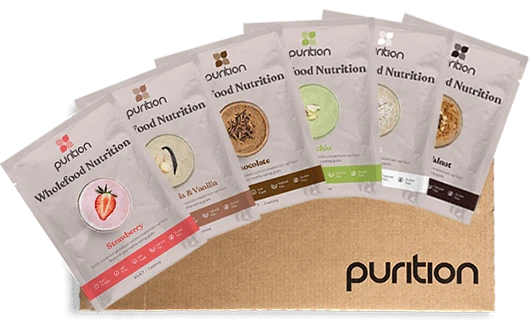You’ve probably heard of the 75 Hard Challenge. It’s hard to miss. From Instagram stories to TikTok transformations, it's been sold as a mental toughness test - a strict 75-day plan designed to push your body, discipline, and mind to the limit.
But here’s the thing: while it’s framed as the ultimate commitment to self-improvement, the 75 Hard Challenge might not actually be the wellness solution you’re looking for.
Let’s break down what it involves, why it might not be the best fit for most people, and what a more sustainable, balanced approach to health could look like instead - minus the risk of burnout.

What is the 75 Hard challenge?
Created by entrepreneur Andy Frisella, the 75 Hard challenge is a mental and physical discipline program; and despite many using it as a fitness or weight loss challenge, it’s actually designed to improve traits such as confidence and self-esteem; transform your way of thinking and how you approach every single task you are faced with in life.
The rules are simple but extreme. For 75 consecutive days, you must:
- Follow a diet aligned with your goals (no cheat meals allowed)
- Work out twice a day for 45 minutes each (one must be outdoors, rain or shine)
- Drink 1 gallon (approx. 3.7L) of water per day
- Read 10 pages of a non-fiction/self-development book or something related to your job/career
- Take a daily progress picture
When you miss a single item? You must start over from day one.
It's this all-or-nothing mindset that's made 75 Hard so popular and quite frankly, so controversial.

Why it's not for everyone
Let’s be clear: creating structure and challenging yourself can be a good thing. Many people thrive with a plan and a goal. But the rigidity of 75 Hard raises red flags, especially when it comes to mental and physical health.
1. It's unsustainable for most lifestyles
Exercising twice a day, every day, for over two months with zero rest is simply not realistic especially for those with jobs, families, or health concerns. Rest days are a critical part of any training plan, and the idea that missing one workout means failure isn’t helpful, it can actually be harmful.
2. It encourages an all-or-nothing mentality
Life isn’t black and white, and your well-being shouldn’t have to be either. The “no cheat meals ever” approach promotes guilt and the need for perfectionism rather than focusing on balance. Many people may find themselves burnt out, injured, or rebounding hard after the 75 days are up. Additionally, if you’re someone who has ever experienced an eating disorder, this can be highly triggering.
3. It ignores individual needs
There’s no customisation. No room to honour your body, your cycle, your energy levels, or your mental health. Whether you're dealing with hormonal shifts, injury recovery, or just a demanding week, 75 Hard doesn’t care. You do it, or you fail. Plus, a gallon of water a day can be excessive for some - whilst hydration is essential, more isn’t always better and your water intake will be totally dependent on your individual need.
4. It's not rooted in nourishment
While the challenge demands a strict diet, it doesn’t focus on what real food actually looks like. There’s no guidance on balance, blood sugar, protein, or nutrients just “stick to a diet.” That vagueness can be confusing at best and dangerous at worst.

So, what's the alternative?
Enter the more realistic cousins of 75 Hard: the 75 Soft Challenge and the 75 Medium Challenge. Both aim to keep some structure and discipline many people enjoy but with a more forgiving approach.
What is the 75 Soft challenge?
The 75 Soft Challenge is often seen as a gentler, more sustainable version. It was popularised by social media as a way to build healthy habits without the extremes.
Here's a typical 75 Soft challenge checklist:
- Eat well and drink alcohol only on social occasions
- Exercise (any form) for 45 minutes once a day (with one active recovery day a week)
- Drink 3 litres of water
- Read 10 pages of a book daily
The difference? It leaves space for life. You can go to a friend’s birthday dinner and because walking can be part of your exercise, it can work into a routine quite nicely. You can also have time to rest. Plus, you may actually build habits that could last longer than 75 days.
What about 75 Medium?
Some people fall somewhere in the middle wanting more of a challenge than 75 Soft, but more flexibility than 75 Hard.
There’s no strict official version of 75 Medium, but many interpret it like this:
- One 45-minute workout a day
- Healthy food choices 90% of the time
- Drinking half your body weight in ounces of water daily
- 10 minutes of daily reading or listening to a podcast
- 5 minutes of meditation
No start-over rule, just consistency
Think of 75 Medium as the half-way house - enough structure to keep you motivated, but enough flexibility to avoid burnout. For this challenge, you could probably easily incorporate 2-3 of these requirements in one hour of your day.
Whilst both the 75 Soft and 75 Medium are less extreme versions and could be more practical, neither challenge lays out nutritional foundations or considers you as an individual. ‘Eating well’ or suggesting ‘healthy food choices’ is still very vague and with lack of direction, could be taken to an extreme. It doesn’t highlight the importance of protein, fibre and healthy fats with meals and is totally subjective. Additionally, blanket hydration rules do not consider your body size, the climate you live in or how much you sweat, which could leave you potentially flushing out key minerals.
The real question is what are you really looking for?
Whether you’re searching “What is the 75 Hard challenge?” or “75 Soft challenge,” the truth is: most people are after some kind of reset. You want to feel better, clearer, stronger, more in control. That’s valid.
But that change doesn’t have to come from something extreme or punishing.
Here’s what works better, long term:
- Build routines that support you, not break you
- Focus on whole, minimally processed food, not fad diets
- Exercise consistently but respect your energy and your cycle
- Check your urine and aim for pale yellow to see if you are hydrated enough
- Rest without guilt
- Find podcasts or books that inspire you to want to read/listen when you can
- Track progress in how you feel, not just how you look

Nourishment over numbers
It's all about simple, nourishing choices that support real-life well-being. Not six-pack chasing. Not meal-skipping. Not pushing through burnout.
Whether you’re doing 75 Soft, 75 Medium, or just want to feel a little more like yourself again, whole and minimally processed food choices are a powerful place to start. Think potatoes instead of crisps, chicken breast over chicken nuggets, oats instead of cereal bars.
If 75 Hard got you thinking about change, that's great but you don't have to go all-in to see real results. There's no medal for pushing through exhaustion or cutting out your favourite foods. True resilience comes from showing up for yourself with kindness, consistency, and honesty.
So skip the extreme. Choose what supports your life, not what takes it over.


|
Cara Shaw -Purition AmbassadorWritten by Registered Women's Health Nutritional Therapist, Cara Shaw Visit Cara's website Follow Cara on Instagram |



